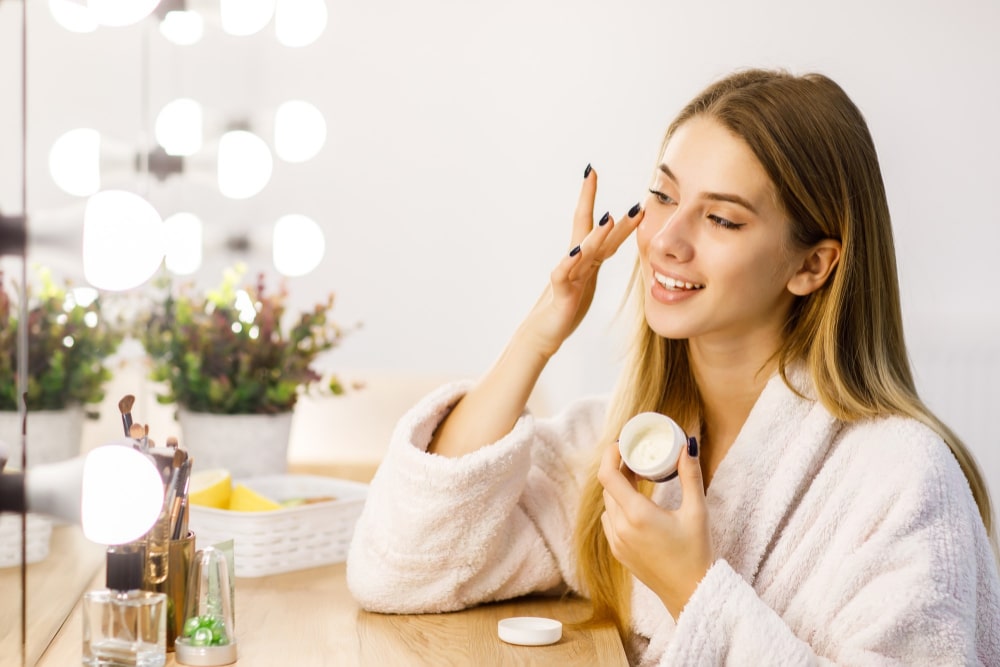
It's not your imagination: the beauty industry is getting bigger. And that's bad news for the planet. While it might seem like a trivial problem to worry about - after all, what could be more harmless than pretty lipstick? It turns out there are many issues with how cosmetics are produced and consumed, with an increasing demand for them only heightening the issue.
It’s a sad fact that the beauty industry is notorious for its negative impact on the environment. The manufacturing of many of our favourite beauty products is a drain on essential resources, and the business of selling them contributes to pollution in multiple ways.
Some of these problems are easy to address. We can all make simple choices that will reduce the amount of packaging we throw away, or that will prevent us from buying things that have been tested on animals. Other problems are harder to overcome. It might be challenging to find a skincare product that hasn't been tested on animals since animal testing is still very common within the industry.
Find out the details in the following lines.
What is the biggest problem?
Worldwide, we produce 300 million tons of plastic a year, and it takes 450 years for a plastic bottle to degrade. By 2050 there will be more plastic in the ocean than fish, according to an estimate from the Ellen MacArthur Foundation. In China, where most of our plastic packaging goes, the plastic recycling rate is lower than 4%.
Naturally, these figures don't consider all the plastic microbeads used in scrubs and beauty products that end up in our oceans and seas or all the chemicals dumped in sewers and rivers.
All that plastic and paper and cardboard and foam and mirrored glass and more is not only a waste of space in the landfill, but it's also a waste of resources – particularly non-renewables. The extraction, processing, shipping and disposal of all this packaging requires massive amounts of energy, water and other materials. When we think about the beauty industry as an environmental problem, we tend to focus on the pollution caused by beauty products themselves – makeup, hair dye, nail polish – but we should also think about the impact of all that packaging.
The ingredients consumed in beauty products can also be problematic
For example, microbeads are tiny pieces of plastic found in many face scrubs and toothpaste. While they're too small for us to see, they end up in our oceans, lakes and rivers, where they're eaten by fish and other marine life. Other chemicals that can be found in beauty products include parabens (linked to breast cancer), phthalates (linked to reproductive disorders) and petrochemicals (used as a solvent).
The Environmental Working Group reported that more than 75 percent of products tested contained at least one ingredient with the potential to disrupt the hormone system.
What can we do?
One, you can research brands and be mindful of which ones you support. Talk to your friends and family about the issues at hand and what they think the best course of action is.
By researching brands, you can make sure that the products you're using are not harmful to you or the environment. Two, if you're purchasing luxury cosmetics, do some research to see if they're sustainable. Luxury products may cost a bit more than drugstore brands or other organic, natural cosmetics, but rest assured that it's worth it for your health and the planet.
Three, spread awareness, host a screening of documentaries like The True Cost and Toxic Beauty or share this article with your friends. You can also encourage your favourite beauty brands to go green by contacting their customer service department and voicing your concerns.
Another significant thing you can undertake is to buy cosmetics online. Therefore, you can better research the products and prefer the ones that have not been tested on animals, are completely vegan and are safe to use.
Less is more
We are sure that you also have at least a few products in your kit that you do not use. It is crucial to think about your routine and be careful when considering a new purchase.
When you buy beauty products, it’s easy to forget about the environmental impacts of your purchase. But in reality, chemicals in your beauty products can have an effect on the environment around us. From the damage caused by plastic bottles to the chemicals in our makeup, it's vital to consider how what we purchase can affect our surroundings.
The environmental impact of beauty products starts with what goes into the actual product itself. Most beauty brands are owned by major corporate companies that are more interested in profit than they are in your health or well-being. These companies are willing to use unnecessary amounts of chemicals because it makes their product less expensive to produce. However, this comes at a cost — the cost of harming your health and the health of the environment.
Save the planet, because in that way you preserve your health and provide better living conditions for the generations to come.
Written by Alison Pearson
About the Author
Alison Pearson is an interior design student. She is a writer and designer, and her ultimate passion is art and architecture. She is also a bibliophile and her favourite book is "The Sound and the Fury" by William Faulkner. Follow her on Twitter.
You may also like
Top Eco-Friendly Trends From the Retail Signage Industry
Sustainable Packaging: Why It Matters For Your Business
7 Eco-Friendly Considerations When Doing Laundry
Simple Ways to Leading an Eco-Friendly Lifestyle
